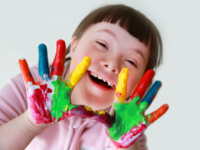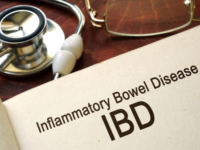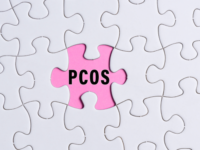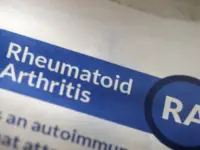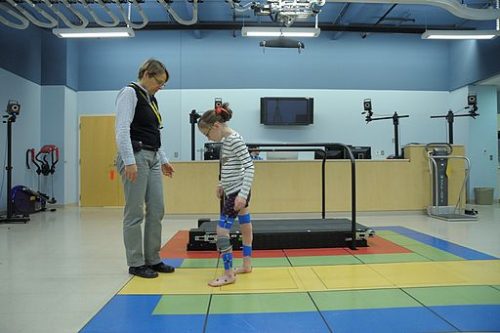
Cerebral palsy and Down syndrome are two medical conditions that occur from birth as a result of various etiological factors. While it may be easy to visually identify affected individuals and while both conditions are considered disabilities, it is important to understand the differences between these two conditions as each will require different kinds of treatments [1]. While both conditions will leave those affected with lifelong challenges, being able to identify the different characteristic features between the two conditions will provide parents, caregivers, physicians and therapists with additional information which will in turn allow them to properly help the affected individuals live long, healthy and satisfying lives [2].
What is cerebral palsy?
Cerebral Palsy is defined as a neurological disorder or brain condition which appears during early childhood. It affects the parts of the brain known for controlling muscle movements and results in permanent changes to body movements, muscle coordination and balance [3]. These symptoms can range from mild conditions to those that are more severe and debilitating to the affected individual. While most children are usually born with this condition, it may not be properly detected until months or even years after their birth.
Causes of cerebral palsy
While the exact cause is still unknown, a variety of factors are known to cause cerebral palsy. These include brain damage as a result of some kind of physical trauma during the first few months or years after birth. Common examples of such trauma include head injuries, motor accidents or heavy falls which lead to disruptions in normal brain development. Additional causes include bacterial infections such as meningitis, viral infections such as encephalitis, negligence during delivery, asphyxiation and / or a lack of oxygen to the brain.
Signs and Symptoms
While cerebral palsy is a life-long disorder, symptoms can be so mild that they are hardly even detectable or completely debilitating such that they affect every area of an individual’s life [1]. Early signs include lack of muscle coordination, muscle tightness and exaggerated muscle reflexes, walking on toes and dragging of legs. Neurological symptoms include fits, impaired hearing and vision, bladder and bowl inconsistencies, delayed motor development and difficulties with walking, swallowing, speaking and seizures [2].
Prognosis of cerebral palsy
While cerebral palsy is a neurological disorder resulting in major changes of muscular movements, there is no guarantee that it is a hereditary condition meaning that the risk is not increased of having a second child with the same disorder [2]. In addition, while there are some changes to muscular movements, these changes may not worsen over time and this condition does not necessarily determine the life expectancy of the affected individual [1].
Treatment methods of cerebral palsy
While there is no permanent cure for cerebral palsy there are still a range of treatments that are available that aid in improving the effects of the disability. If detected early, through extensive treatment and surgery, improvements in muscle coordination in affected children have been noted [2]. Treatments range from physical therapy to occupational therapy to speech therapy. Treatment may also include the use of anti-seizure drugs and muscle relaxants to provide some form of pain relief and slow spasms. In addition, some form of surgery can also be carried out to improve body deformations which can subsequently be eased through the use of wheelchairs and braces [3].
What is Down syndrome?
Down syndrome is defined as a genetic disorder caused by a chromosomal birth defect. This condition is usually characterised by a delay in physical growth, distinct facial features and mild to moderate intellectual disabilities. Severe health problems such as heart defects, leukaemia and dementia may be common in some affected individuals.
Causes of Down syndrome
Chromosomes are simply described as being a group or package of genes in cells within the body. These chromosomes will determine how a baby’s body will form during pregnancy and how it will function as it grows in the womb after birth [4]. Most people have 23 pairs of chromosomes which in turn means there is a total of 46 chromosomes within the body. Down syndrome occurs in the body when a child develops an extra copy of chromosome 21 leading to a total of three chromosomes of this particular type [2]. This is sometimes referred to as Trisomy 21. One of the biggest factors known to increase the risk of having a baby with Down syndrome is the age of the mother. Women who are 35 years and older are more likely to have a child affected with Down syndrome than women who become pregnant at a younger age. In addition, a positive family history can also increase the incidence of giving birth to a child with Down syndrome [4].
Signs and symptoms
Each person with Down syndrome is known to have their own set of abilities and limitations. These include distinct facial features which vary from individual to individual. Common features include a flat face, small head, and short neck, eyes that slant upwards, poor muscle tone, short palms, small height and increased flexibility. Some common complications that are experienced by almost all affected individuals include low muscle tone and loose joints, hearing loss, heart defects, eye diseases and ear infections.
Prognosis of Down syndrome
Pregnant women are commonly offered diagnostic tests for Down syndrome regardless of their maternal age. In addition, after the baby is born, while the physical appearance of the baby should be checked, additional chromosomal tests should be done to identify children with Down syndrome [1].
Treatment methods
While there is still no permanent cure, early intervention my help in preventing certain health issues. In addition, the use of some supportive measures as well as emotional and social support from parents is imperative as it will aid in improving the quality of life of the affected individual together with aiding their emotional and social development [4].
Similarities between cerebral palsy and Down syndrome
Both of these conditions are similar in that they occur in the womb or near to the time of birth. While neither cerebral palsy nor Down syndrome can be cured, both can be managed with a range of physical, educational, social and psychological activities [2]. This together with a range of prescribed treatments can be used to manage the respective symptoms. Regardless of the disability children with these conditions will most commonly face some degree of physical restrictions at some time in their lives [3]. For example, children with cerebral palsy could experience difficulties with their balance or occasional spastic muscular movements while children with Down syndrome could experience lower muscle tones and delays in physical movements [2].
Differences between cerebral palsy and Down syndrome
One of the biggest differences between the two conditions is the cause. While Down syndrome is caused by a chromosomal abnormality, cerebral palsy is generally caused by a range of factor leading to some form of brain damage [3]. In addition, there is more variety with regards to symptoms and complications in an individual with cerebral palsy as when compared to an individual with Down syndrome. Common complications of cerebral palsy affected individuals include gastrointestinal illnesses, hearing impairments, asthma, limb deformities, lung diseases, malnutrition and so on while this list is much more reduced in Down syndrome affected individuals whose complications range from intestinal blockage, hip dislocations, thyroid disease and anaemia [4].
The intellectual abilities of both affected individuals differ greatly. While the IQ of individuals with cerebral palsy may not be greatly affected, children with Down syndrome on the other hand will have a moderate to lower level of IQ as when compare to children without Down syndrome of the same age. They are also known to speak slower than other children [4]. An additional major difference between these two conditions is the methods of diagnosis. Down syndrome can easily be diagnosed by analysing the chromosomes and determining if there is an extra copy of chromosome 21 while cerebral palsy requires a range of tests to diagnose the specific kind of disorder.
Table 1: Differences between cerebral palsy and Down syndrome
| Cerebral palsy | Down syndrome |
| A group of neurological disorders characterised by movement and motor skills impairments | A genetic disorder that is known to affect the entire body with mild to moderate intellectual disabilities. |
| Caused due to injury to the brain before, during or after birth usually resulting in oxygen deprivation to the brain | Caused as a result of an extra copy of the chromosome 21 |
| Symptoms include:
Lack of muscle coordination Muscle tightness Exaggerated reflexes Dragging legs Too tight or too floppy muscle tone Fits Impaired hearing and vision Bladder |
Symptoms include:
Distinct facial appearances Poor muscle tone Broad and short palms Increased flexibility Small height. |
| Life expectancy is not unusually limited | Life expectancy of about 60 years |
| Normal IQ | Lower IQ |

